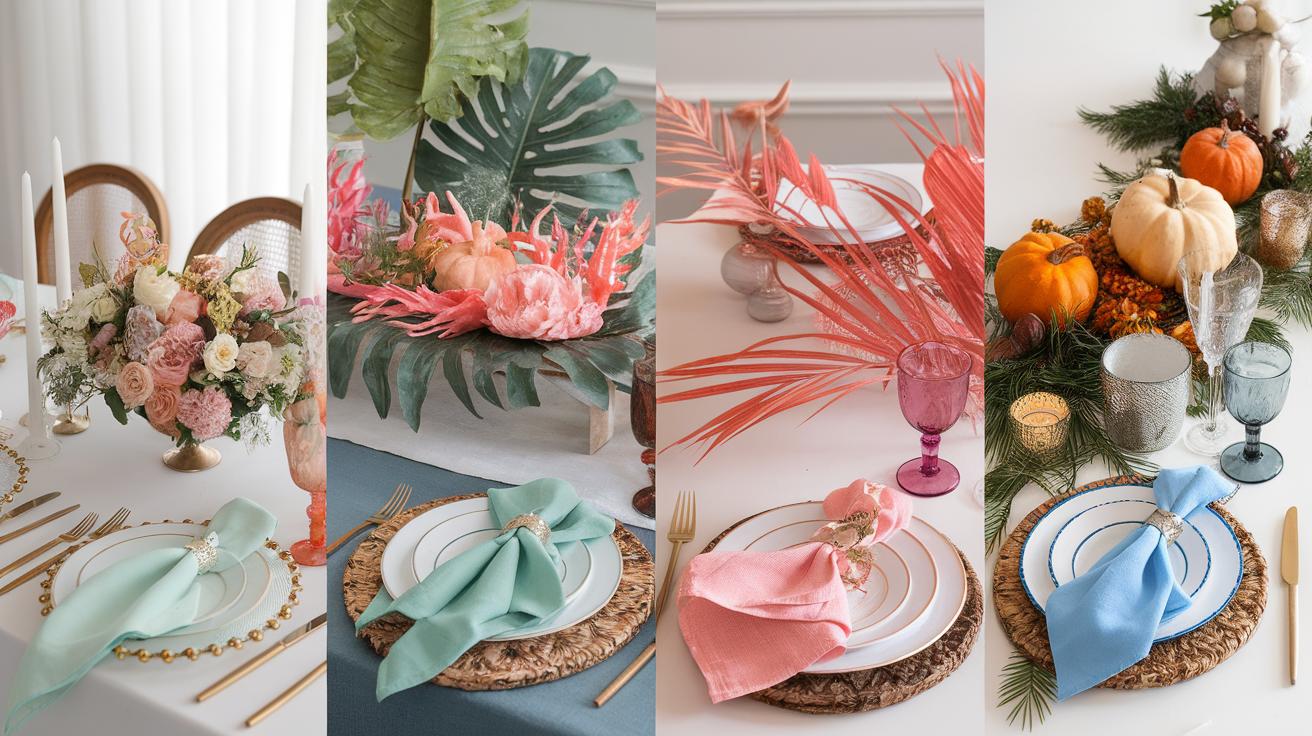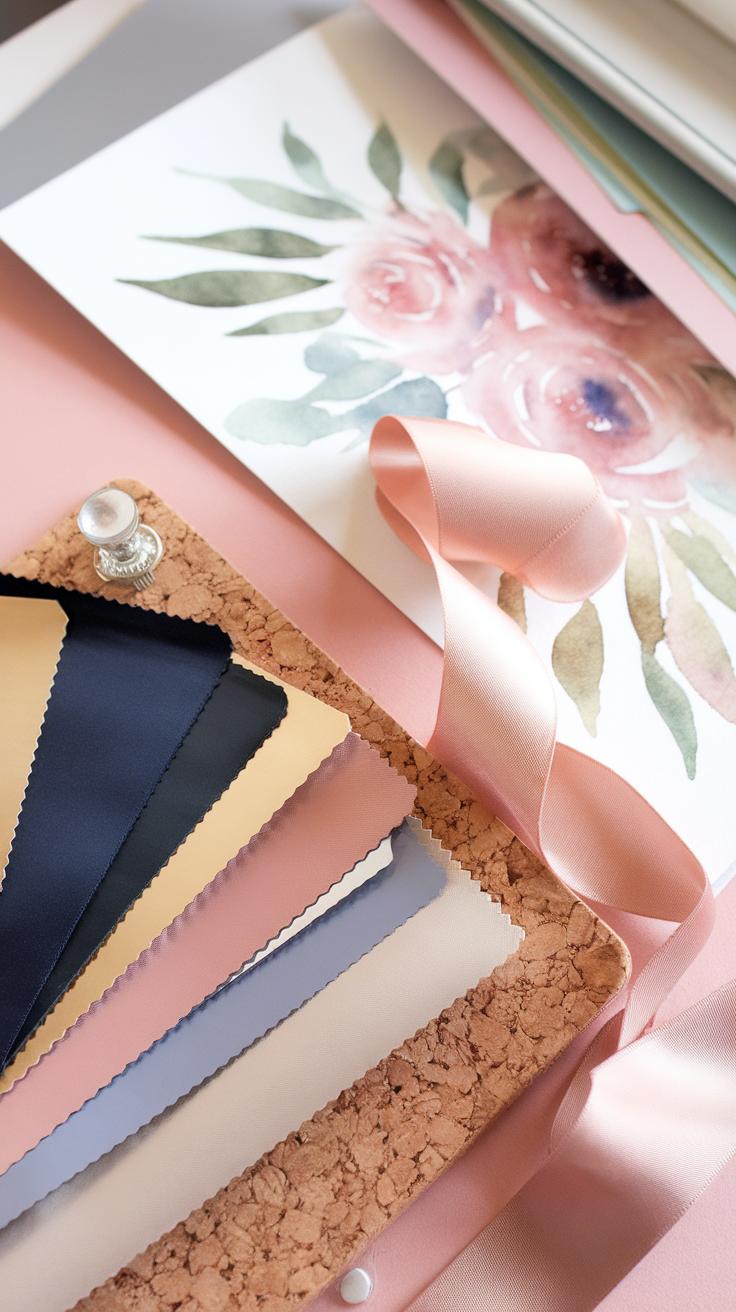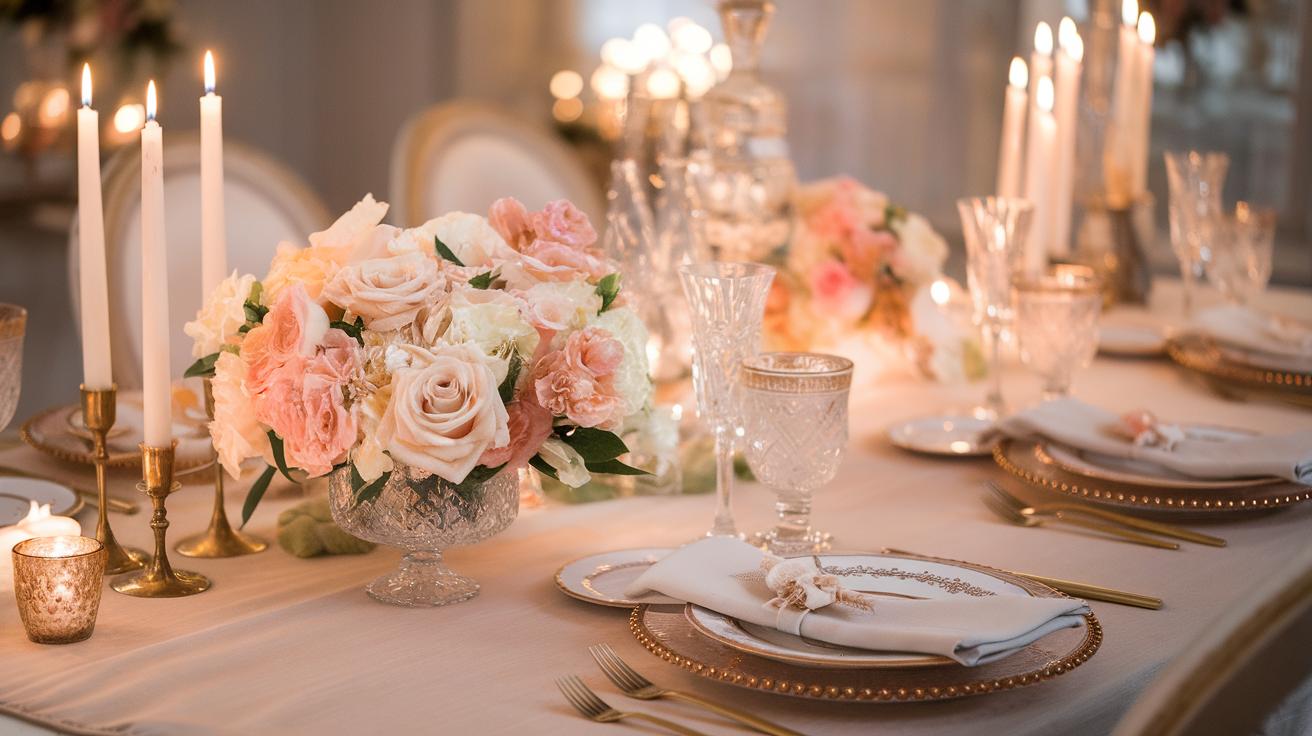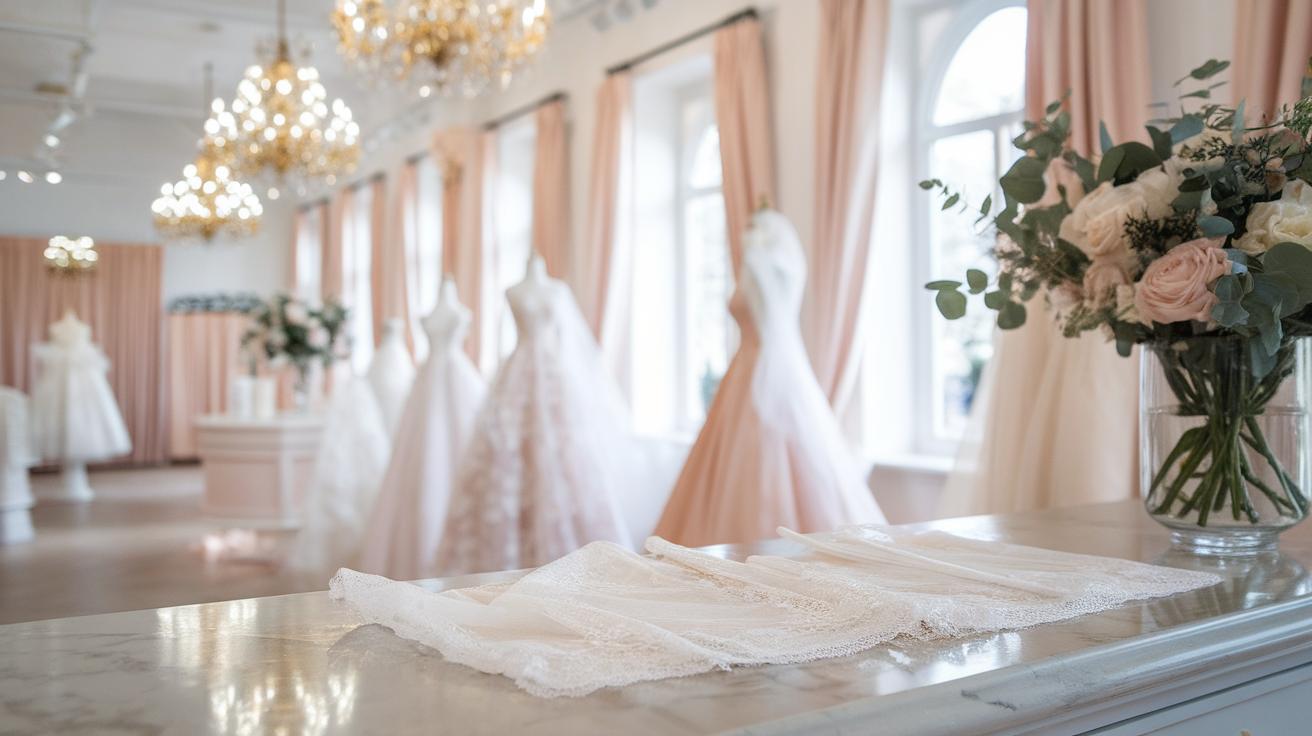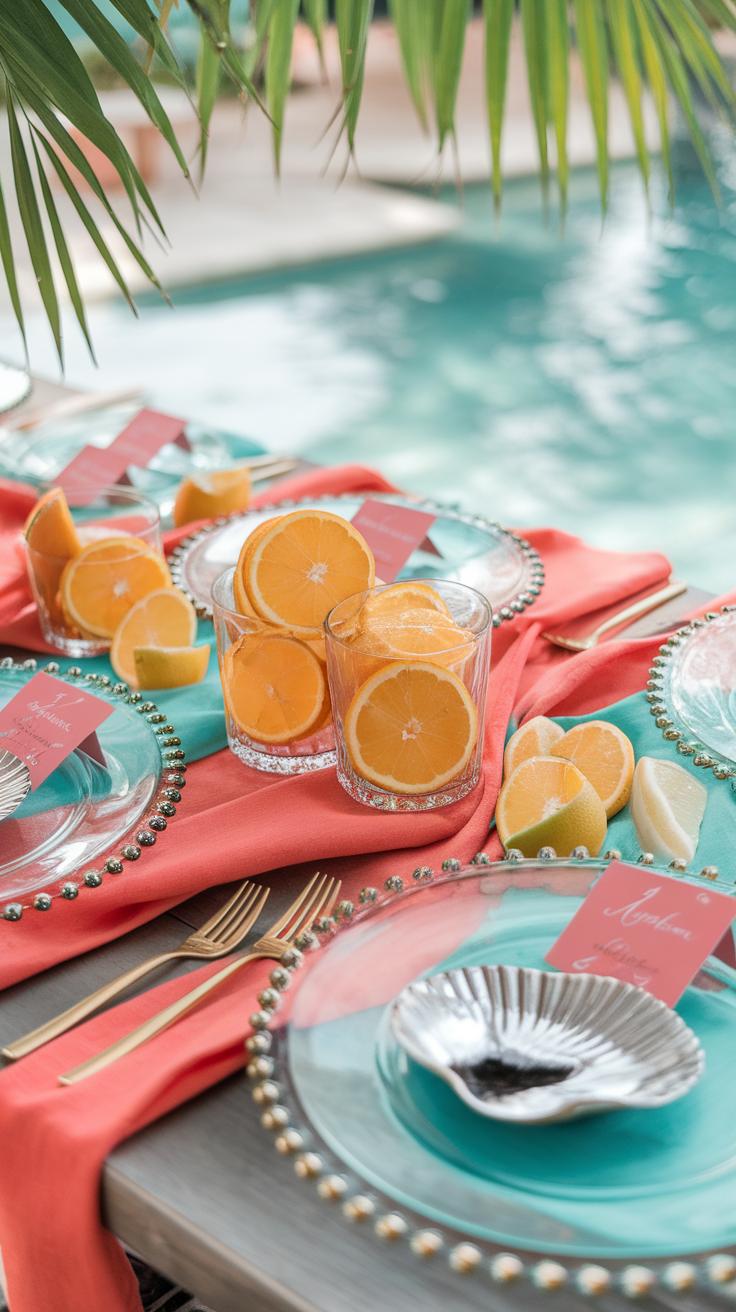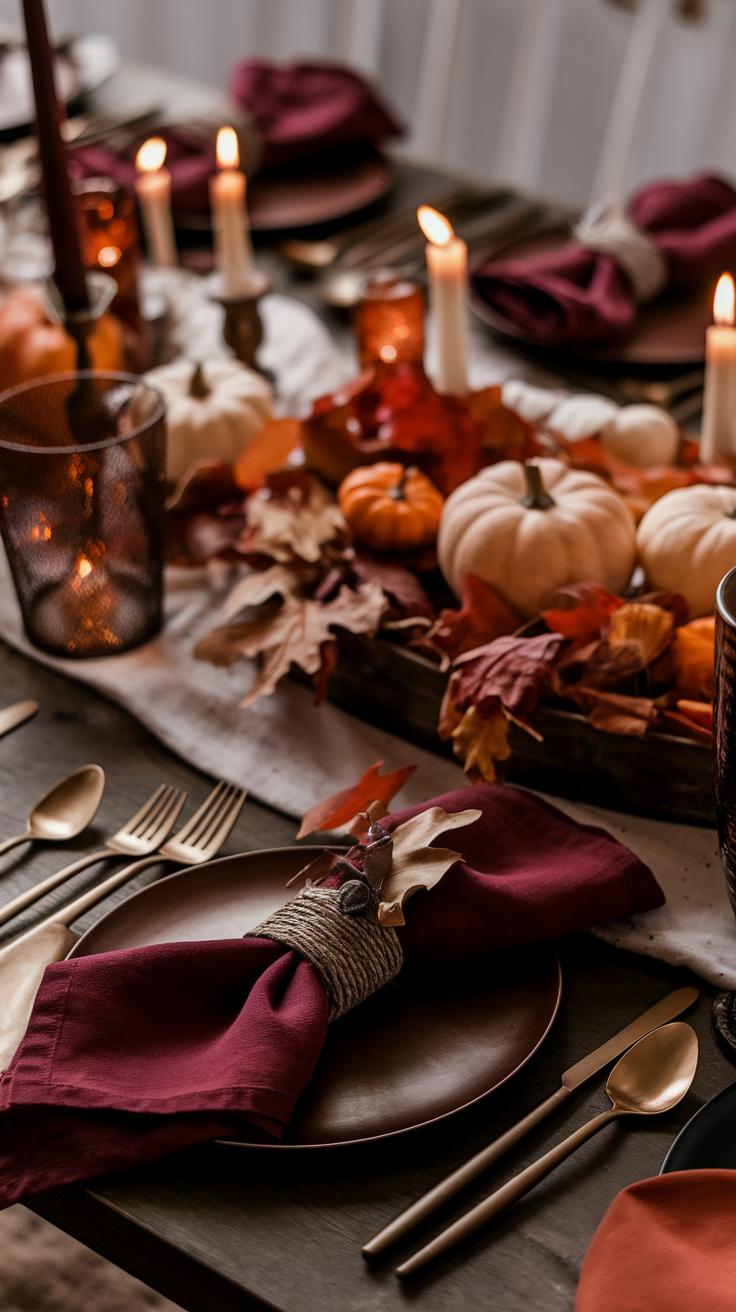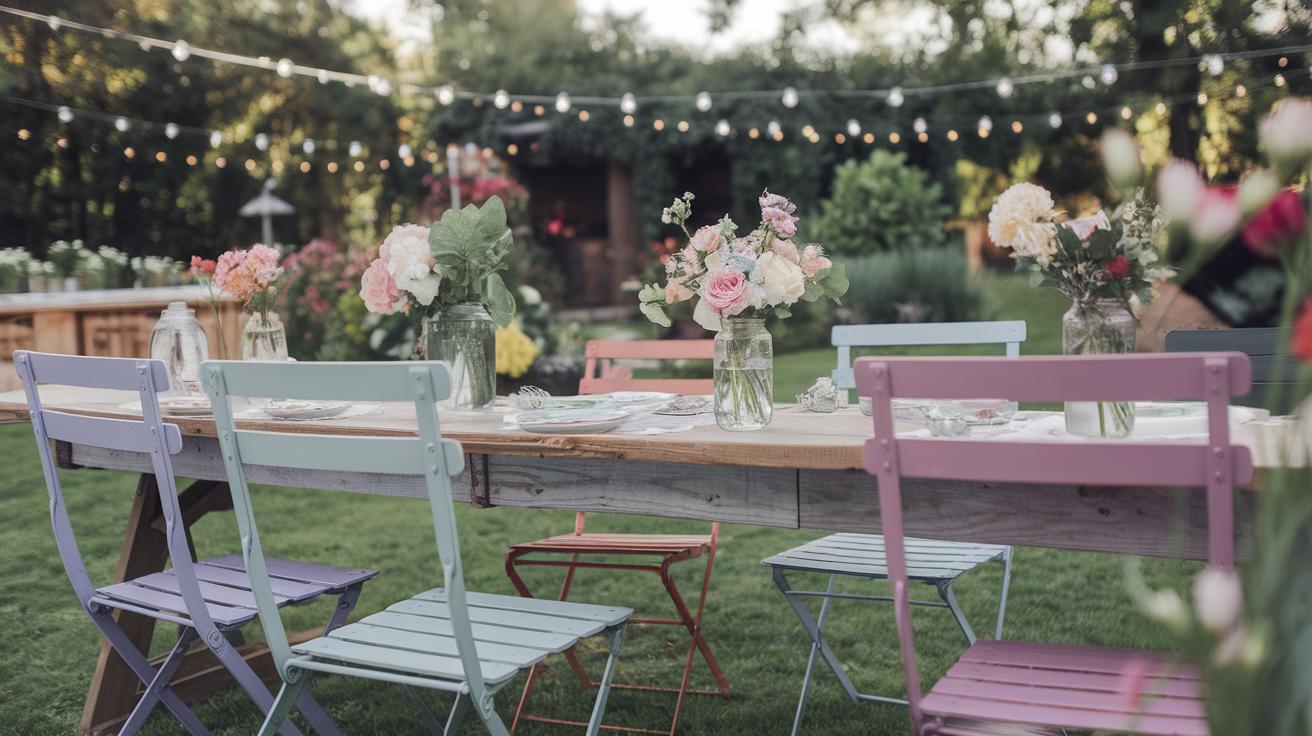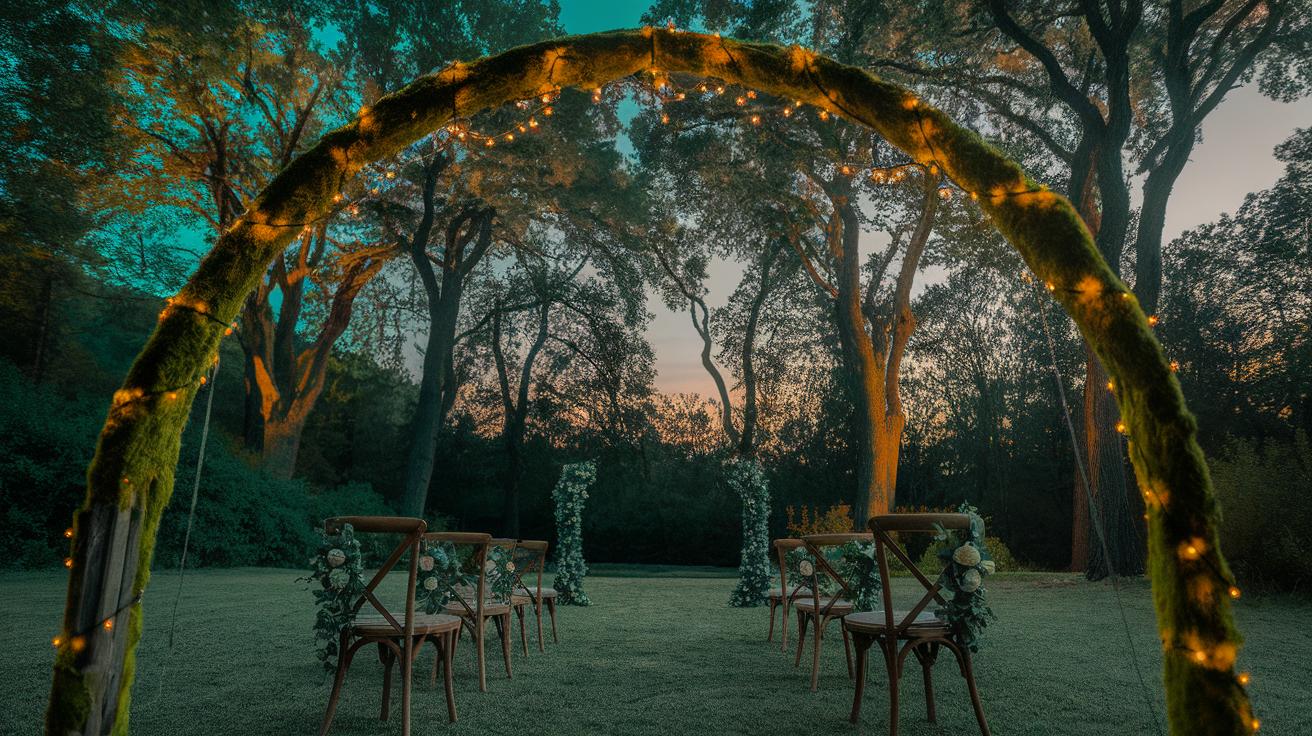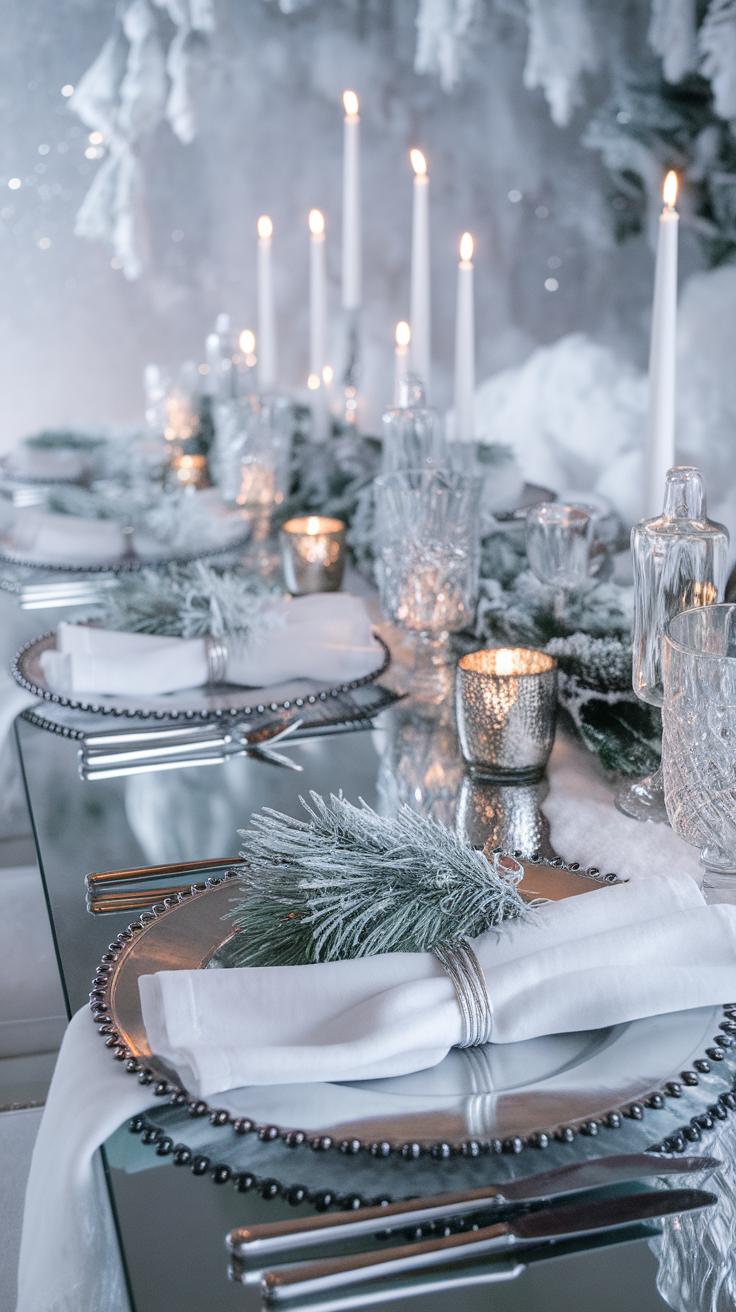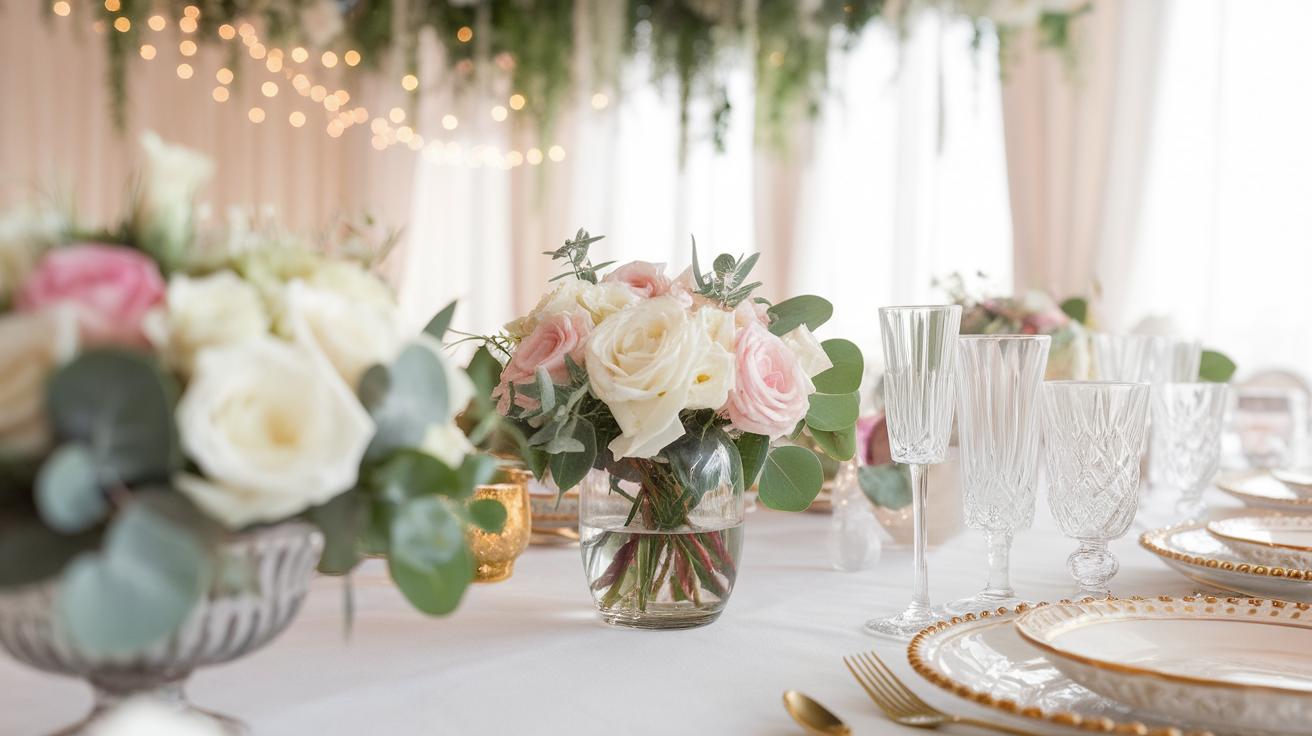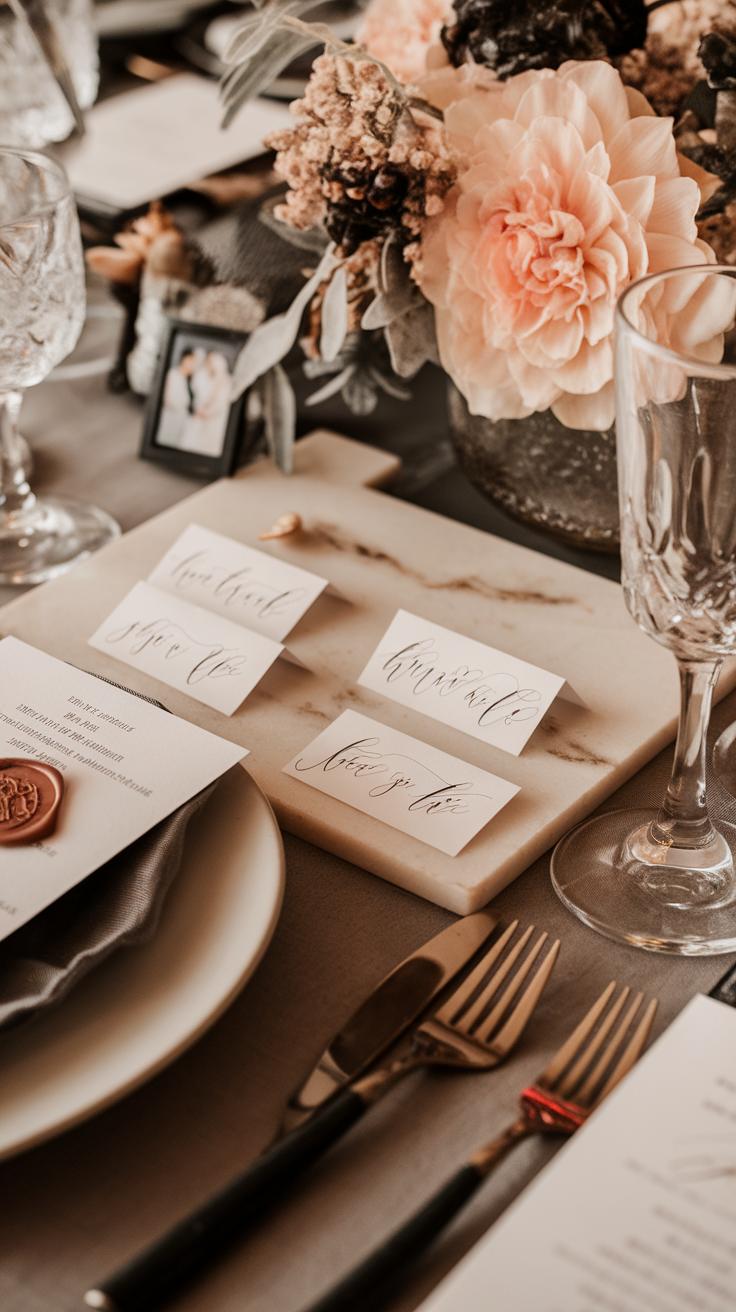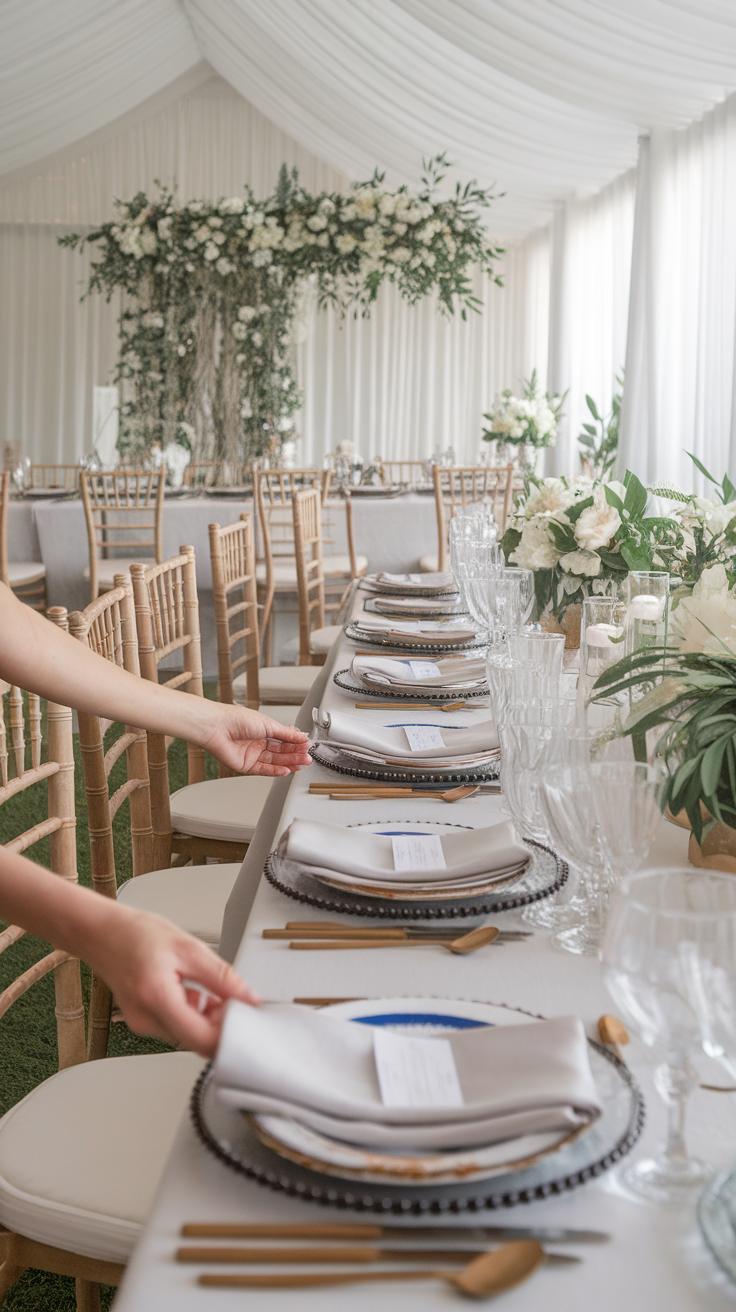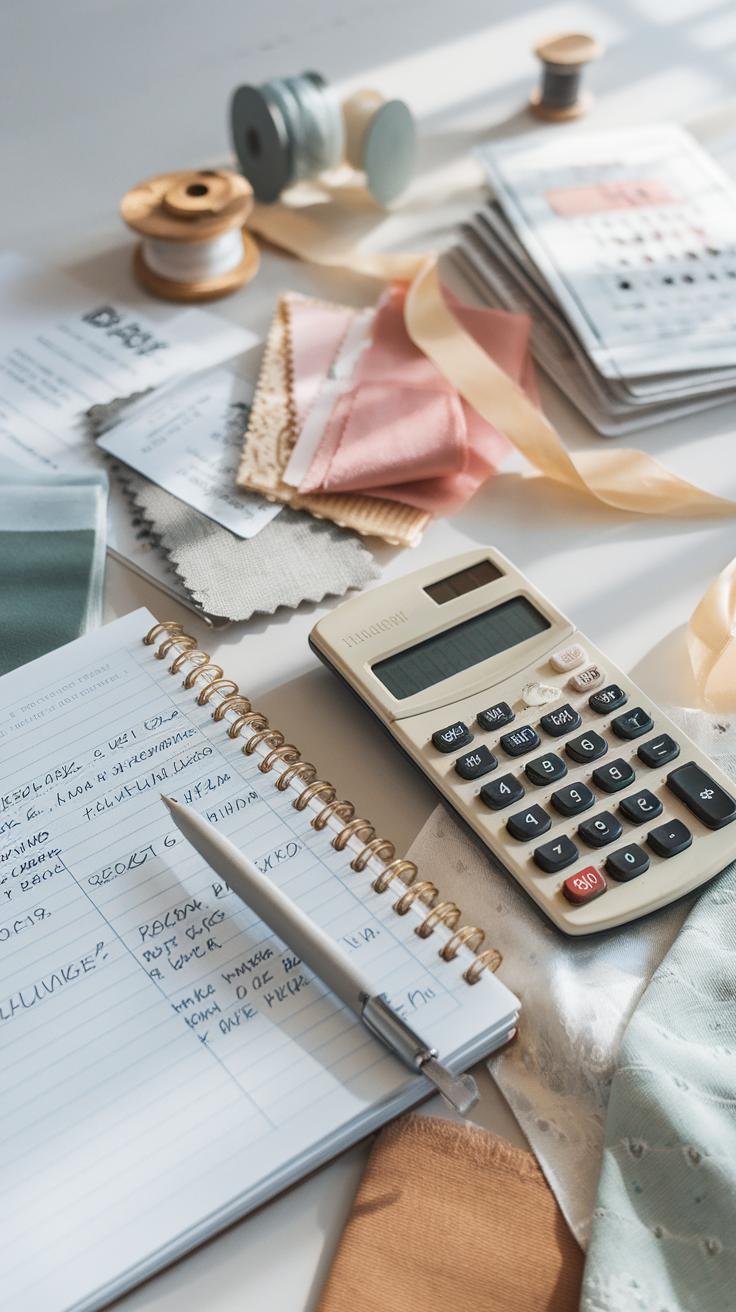Introduction
Wedding table settings set the scene for your special day. They offer your guests a first impression of the event’s atmosphere. These settings involve choices like centerpieces, tableware, linens, and decorations. Every detail speaks to the style and mood you want to create. Knowing how to arrange your table can help you create a memorable experience.
Your wedding happens in a specific season that can inspire your table decor. Different seasons bring distinct colors, flowers, and themes. This article guides you on how to design elegant wedding tables that suit any season. You will find practical ideas and tips that help you make your wedding table settings beautiful and fitting for the time of year.
The Basics of Wedding Table Settings
Every wedding table setting starts with key components that work together to create a seamless look. Think of tableware, linens, and decorative elements as the foundation of your design. Plates, glasses, silverware, and napkins form the functional base. They must suit the style of your day while serving practical needs. Linens such as tablecloths and runners add texture and color that tie the theme together. Choose fabrics that complement your wedding style and feel comfortable for guests.
Decorative pieces like centerpieces, candles, or small accents bring personality to the table. These elements should enhance your color choices without overwhelming. Keeping everything balanced helps guide your guests’ experience without clutter. How do you want your table to feel—simple and modern or rich and traditional? Your decisions about these basics set the tone for every detail on your special day.
Tableware Essentials
Your wedding table needs the right tableware to work smoothly. Start with the plates: a dinner plate, often accompanied by a salad or appetizer plate. Consider the style—classic white or patterned—that matches your wedding atmosphere. Glassware includes water glasses, wine glasses, and sometimes champagne flutes. Make sure you have one for each drink served.
Silverware includes forks, knives, and spoons depending on the courses you plan. Typically, forks go on the left, knives and spoons on the right. Napkins can be cloth or decorative paper, folded or styled creatively. The quality of these items affects both appearance and guest comfort. Choosing pieces that complement each other helps maintain harmony across every place setting.
Designing a Cohesive Table
Arranging your tableware is more than just placing items in order. Start with function—each piece should be easy for guests to reach and use. Position plates in front of each seat, with forks left and knives right, blades inward. Place glasses slightly above the knives to the right.
Consider how your items interact visually. Color coordination between plates, napkins, and linens should feel natural, not forced. Mix textures and shapes to add interest but keep the style consistent. For example, pairing smooth ceramic plates with slightly textured napkins can work well if colors match.
Think about spacing too. Avoid crowding the table to allow space for serving dishes and ease of movement. Your goal is a balanced look that invites guests to the table while supporting the flow of your event. How will your guests experience the table first—by sight or touch? Use this insight to guide your design choices.
Choosing the Right Color Palette for Your Wedding Table
Matching Colors with Wedding Theme
Your wedding table colors should fit smoothly with your overall wedding theme. When you choose tablecloths, napkins, and centerpieces, think about the main colors of your décor. Using the same or complementary shades creates visual balance. For example, if your wedding uses navy blue and blush pink, picking navy tablecloths with blush napkins ties everything together. This connection helps guests feel the flow of your event.
Consider the style too—rustic weddings work well with earthy tones, while modern themes suit sleek, bold colors. Ask yourself if the table colors reflect your personal style and the mood you want to set. Aligning these elements avoids clashes and keeps your design consistent.
Seasonal Color Coordination
Each season offers colors that feel natural and set the right tone. Spring colors often include soft pastels like lavender, mint, and peach. These shades bring lightness to the table and match blooming flowers well. For summer, brighter choices like coral, turquoise, and sunny yellow create energy and warmth.
Fall calls for richer tones like burnt orange, deep red, and gold. These colors pair beautifully with wooden tables or autumn leaves in your centerpiece. Winter favors icy blues, silvers, and deep greens, echoing cool weather and cozy vibes.
To blend colors smoothly, pick one main shade and add two or three accent colors. Use tablecloths for the base color, napkins for accents, and centerpieces to combine both. This way, every color has a place, and nothing feels out of place.
Spring Wedding Table Ideas
Your spring wedding table should feel fresh and inviting. Focus on soft pastel colors like mint green, blush pink, and pale yellow to bring a calm, natural look to your setting. Use light fabrics such as linen or cotton for tablecloths and napkins. They add texture without feeling heavy, making the table appear bright and airy. Consider adding small details like delicate glassware or simple ceramic plates to balance the softness of your textiles. Including subtle seasonal accents like sprigs of greenery or budding branches can highlight the renewal theme of spring. How can you mix these elements to keep your table both elegant and approachable for your guests?
Floral Centerpieces for Spring
Choose flowers that bloom in spring to create your centerpieces. Popular options include tulips, daffodils, ranunculus, and peonies. Arrange them in clear glass vases or simple white ceramic pots to keep the focus on the flowers. Mix tall stems with lower bunches to add dimension and avoid blocking guests’ views across the table. You can also place smaller bouquets around the main centerpiece for a layered effect or scatter petals lightly along the table runner for softness. Experiment with combining greenery such as eucalyptus or ferns with your flowers. What fresh flower combination reflects your personal style while fitting the spring mood?
Light and Fresh Table Linens
Choose breathable fabrics like linen or lightweight cotton to create a spring feel. These fabrics drape naturally, giving the table a relaxed yet polished look. Select colors inspired by the season—soft blues, gentle greens, and warm creams work well. Avoid heavy, dark colors that can make the table feel closed in. Instead, opt for solid colors or subtle patterns like light stripes or small florals. Layering a sheer runner over a solid cloth adds texture and brightness without clutter. How might these fabric and color choices influence the overall mood for your spring wedding?
Summer Wedding Table Settings
Creating summer wedding tables means bringing energy and brightness to your décor. Using vibrant colors like coral, turquoise, and sunny yellow adds life to the table. Bold patterns on napkins or table runners catch the eye and set a festive mood. Mixing these colors thoughtfully keeps the table lively without overwhelming it. Would you choose solid bold hues or mix prints to express your style?
Natural elements enhance the summer feel in subtle but effective ways. Placing shells around centerpieces suggests the ocean without overdoing it. Adding fresh citrus fruits like lemons or limes gives a pop of color and a fresh scent that guests will notice. Sprigs of greenery or tropical leaves add texture and stay true to the season’s natural beauty. How can you combine these touches to make your summer table unique and inviting?
Autumn Wedding Table Decor
Warm colors define autumn wedding tables. You can mix shades of orange, red, and brown to bring warmth to your setting. Try using napkins or table runners in burnt orange or deep red to add color without overwhelming the space.
Burlap adds a rough, natural texture that pairs well with these colors. Consider burlap-wrapped centerpieces or place mats to introduce an earthy feel. Combining soft linens with coarse burlap creates a balanced, inviting look.
Rustic elements like wooden chargers or mason jars also fit well. These details give your table a handmade charm that matches the season’s mood. Think about using leather or twine ties around silverware for a subtle rustic touch you can recycle.
Harvest motifs strengthen the autumn theme. You might place small pumpkins or gourds at each setting or scattered along the table runner. These items connect your decor directly to the season and spark conversation among guests.
Warm Color Tones and Textures
Use rich oranges, deep reds, and warm browns to set a cozy tone. Mixing textures helps bring these colors to life. For example, pair crisp cotton napkins in rust shades with burlap runners or placemats for tactile contrast.
Consider velvet ribbons in deep red to tie napkins or chairs. Velvet adds a lush texture that feels warm against burlap’s roughness. Wood or copper accents also boost the autumn ambiance.
Ask yourself how to balance softness and rustic charm. Adding subtle layers—like a linen tablecloth beneath burlap—offers depth and comfort. Your goal is a setting that feels inviting at first glance and comfortable throughout the event.
Incorporating Seasonal Decor
Add pumpkins and gourds of different sizes as centerpieces or scattered decor. Use white or muted tones for a modern look or traditional orange for classic appeal. Real or faux leaves placed along the table add natural color variations.
Pine cones bring texture and earthy notes. Arrange them with candles for warmth and softness, especially as daylight fades. Choose candle holders that complement the rustic theme, such as wood or brass finishes.
Consider scented candles with subtle aromas like cinnamon or apple. The fragrance can enhance the harvest atmosphere without overpowering your guests. Could candles and natural elements work to create a gentle glow that feels both elegant and seasonal?
Winter Wedding Table Settings
Cool and Sparkling Colors
Winter weddings call for colors that reflect the crisp, calm feeling of the season. Whites create a clean canvas that suggests fresh snow. Pairing these with icy blues adds depth and a frosty charm. Silver accents enhance this effect by introducing a shimmering quality, while touches of gold bring warmth without overpowering the cool palette.
Consider using a white tablecloth with blue napkins folded neatly at each place. Silver chargers or flatware provide a festive gleam. Gold-rimmed glassware can subtly catch the light to create an inviting shine.
Have you thought about mixing tones of blue, from pale to deep navy? This variation can give your table a layered, sophisticated look while staying true to a winter theme. Balance these colors with ample white space to avoid a busy or cluttered appearance.
Decorative Elements for Winter
Bringing warmth to winter’s chill starts with layers of light. Candles make an excellent choice. Use white or silver holders and various candle heights to create visual interest. The flickering flames add movement and a comforting glow.
Crystals or glass beads scatter across the table can mimic falling ice or snow. They reflect candlelight beautifully and add sparkle without effort. Evergreen branches positioned along the centerline introduce natural texture and a hint of forest freshness.
Think about combining pinecones or sprigs of rosemary with the greenery for an aromatic touch. This also helps break the monotony of the color scheme while keeping everything cohesive. How can you balance natural elements with shiny accents to keep your design elegant and inviting? Experiment with layering textures to invite guests into a warm winter welcome.
Adding Personal Touches to Your Wedding Table
Personal details at your wedding table make the celebration truly yours. Custom place cards add a warm welcome by showing guests you thought about them individually. Unique favors create lasting memories tied to your story or the theme. Meaningful decorations reflect your journey and what matters to you as a couple.
When you add these touches, your tables become more than just a place to eat. They tell a story. They spark conversations. Guests feel connected and valued.
Think about what small elements can show your personality and shared experiences. How can these details deepen your guests’ experience while enhancing your seasonally inspired table design? This connection makes your wedding more memorable for everyone around you.
Customizing Place Settings
Personalized place cards make guests feel recognized and appreciated. You can design them with each guest’s name in your chosen font or motif that matches your theme. Consider adding a short note or a fun fact about the person to spark smiles and conversation.
Napkin rings offer another way to customize. Use materials or colors that tie into your wedding season. For example, delicate silk bands work well for spring, while rustic burlap suits autumn events. Adding a small charm or initial can make these simple details stand out.
How would your guests react if their seat held a surprise related to you both? Custom touches turn each spot into a place of honor.
Meaningful Wedding Favors
Wedding favors should reflect more than just your wedding day. Choose items that tell your story or go with your theme. If you love coffee, consider small bags of your favorite blend. For nature lovers, tiny potted succulents or seed packets suit an outdoor or seasonal wedding.
Think about favors guests will use or remember. Something practical can last long after the event. Matching the favors to the season also adds impact. Warm cookies or spiced tea work well for winter, while lemon-scented soaps fit summer’s bright mood.
Could a favor be a simple way to share your values or interests? Picking meaningful gifts shows care and creates deeper connections at your table.
Practical Tips for Wedding Table Setup
Organizing Setup Timing
You should plan the table setup to finish well before guests arrive. Start by breaking down the work into smaller tasks like placing linens, arranging centerpieces, and setting flatware. Set a clear schedule that factors in any venue restrictions or meal timing. For example, if the ceremony happens at 4 p.m., aim to complete the setup by 2 p.m. This buffer allows time to fix any mistakes or make last-minute changes. Avoid rushing by assigning specific time slots for each task. Ask yourself: how many tables need to be set, and how long will each take? Knowing this helps keep the pace steady and efficient, preventing stress on the wedding day.
Tools and Helpers for Smooth Setup
Create a checklist that includes every item and step for table setup. This list acts as a guide to track progress and avoid forgetting details. Share the checklist with your team to keep everyone on the same page. Enlist friends or family as helpers, and assign them clear duties. For example, one person can handle placing centerpieces while another arranges place settings. Use carts or bins to transport items quickly around the venue. Consider building a team with a lead coordinator who manages timing and quality. Think about how many hands you’ll need — more helpers make the job faster and reduce errors.
Combining Modern and Traditional Styles
You can create wedding table settings that feel both fresh and timeless by mixing modern trends with traditional touches. Think about pairing sleek, geometric centerpieces with hand-embroidered lace napkins or fine china. This contrast draws attention and keeps your tables from looking too one-sided.
Modern elements bring a sense of simplicity and clarity to the setting. At the same time, traditional items evoke warmth and nostalgia, connecting your celebration to long-held customs. How might you balance these two without making the tables feel cluttered or confusing?
Try selecting a few traditional pieces as anchors, like classic silverware or crystal glassware. Then add contemporary touches such as minimalistic candle holders or bold-colored table runners. This approach lets each style shine without overpowering the other.
Focus on cohesion through color and texture to keep your setting unified. Experiment with mixing these styles in a way that reflects your personality and honors your wedding’s theme.
Incorporating Trendy Details
Adding trendy details can update your wedding tables while keeping them simple. Geometric shapes are very popular now. Consider hexagonal name cards, octagonal plates, or vases with clean lines. These elements give a modern edge without excess decoration.
Minimalistic decor supports clarity in your table arrangements. Choose a few statement pieces instead of many small items. For example, a single sculptural centerpiece or a set of clear glass votives works well.
Metal accents like rose gold or matte black flatware add subtle sophistication. These details draw the eye and link modern design with elegance.
What small update could you make that fits your taste and adds a modern feel to your tables?
Respecting Traditional Elements
Traditional pieces carry meaning and connect your celebration to family history or wedding customs. Fine china, heirloom glassware, or lace linens show care and respect for these roots. Using them boosts the emotional value of your decor.
Lace table runners or embroidered napkins bring softness and pattern without overwhelming the table. They set a classic tone that contrasts nicely with simpler modern elements.
Some traditional rules can guide your decisions. Placing the forks on the left, the knives on the right, and keeping glassware orderly respects longstanding dining etiquette.
Which family traditions or heirlooms are important enough to include on your wedding tables? Preserving these creates a meaningful and memorable atmosphere your guests will notice.
Budgeting for Elegant Wedding Table Settings
Prioritizing Key Elements
Deciding where to spend your budget makes all the difference in creating elegant table settings. Focus your funds on items guests will notice first, like quality linens or beautiful centerpieces. These pieces set the tone and can elevate the whole look. Save on smaller items such as napkin rings or place cards by choosing simple, clean designs or even printable options.
Consider how many tables you’ll decorate. Investing in eye-catching pieces for fewer tables can have more impact than spreading your budget thin. Prioritize fresh flowers or greenery during their peak season when prices are lower. Will guests notice expensive glassware, or could you rent good-quality options instead? Focus spending where it counts most.
DIY Ideas to Save Costs
Creating your own decorations cuts costs while adding personal charm. Use mason jars or small vases filled with seasonal flowers or candles for centerpieces. Wrap jars with twine or ribbon to match your theme. Handmade place cards printed on quality paper also create a polished look without the store price.
Consider making favors yourself, like small jars of homemade jam or customized seed packets. Simple paper or fabric flowers can decorate the tables beautifully without high costs. What creative DIY project could reflect your style and save money? Your hands-on effort can make your settings both elegant and budget-friendly.
Conclusions
Your wedding tables present a chance to express your style through thoughtful settings. From choosing the right colors to picking seasonal flowers, every choice counts. You can use the season as a guide to find themes that feel natural and elegant. Small touches like candles and personalized napkins add to the guest experience.
Each season offers unique elements that bring charm to your wedding. Spring invites fresh blooms, summer welcomes bright colors, autumn suits warm tones, and winter inspires sparkle. Use these ideas to make your wedding tables inviting. Let your tables reflect the joy of your celebration in every detail.

